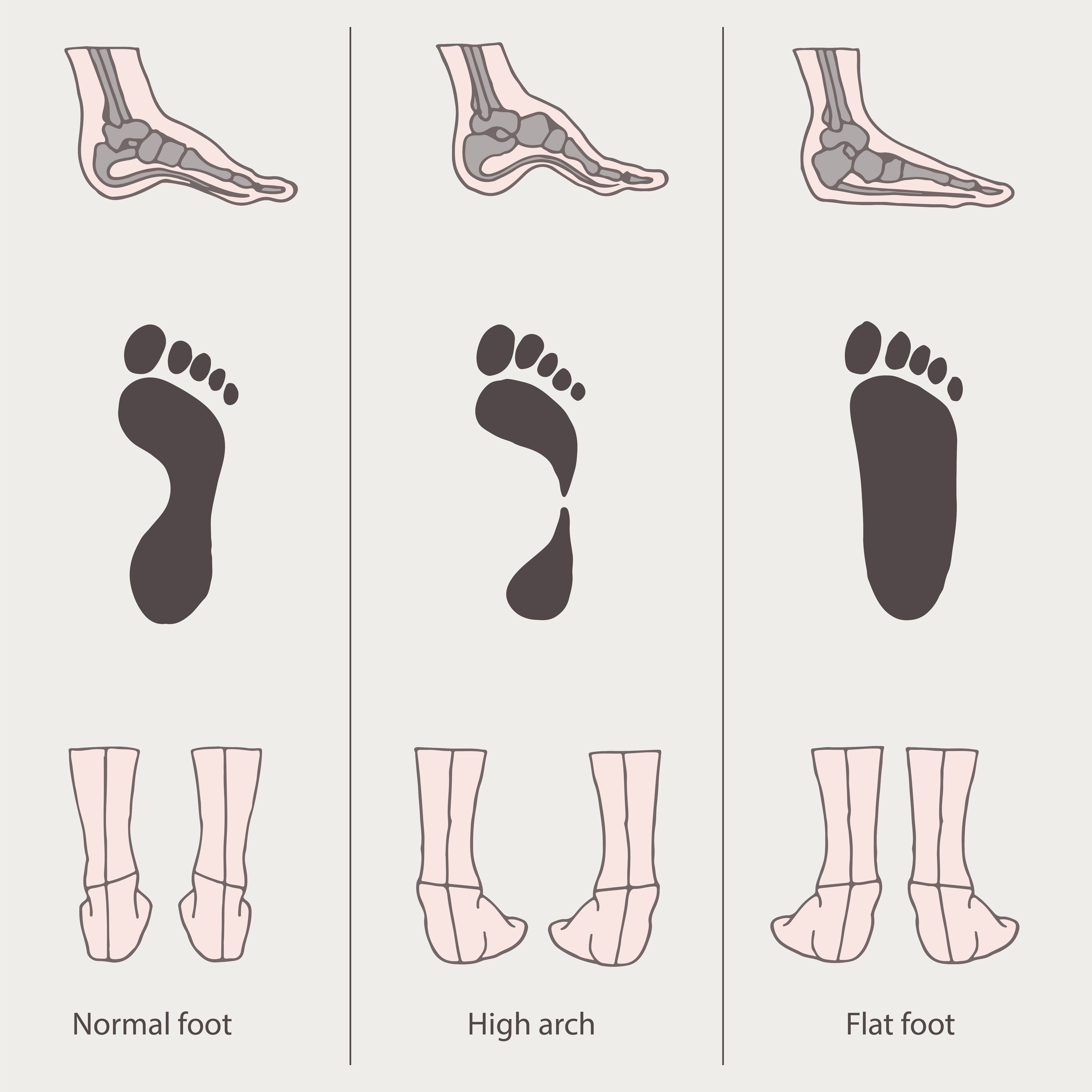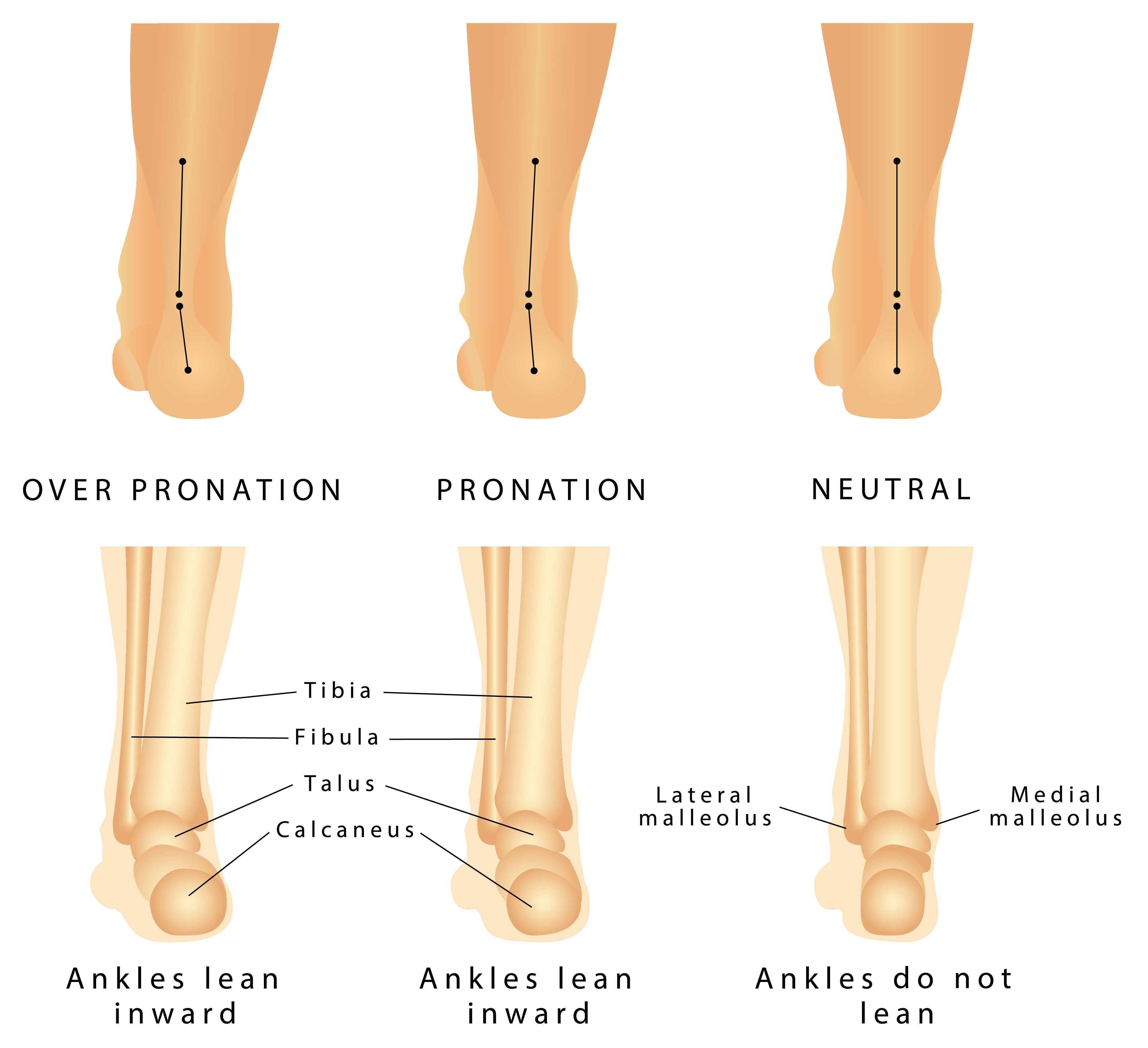Think "Goldilocks". It Has To Be "Just Right"!
If you frequently experience heel pain or pain in the arches of your feet while standing, walking, or exercising, you may have “pes planus”, commonly known as “flat feet” (or “fallen arches"). Flat feet is typically an inherited (genetic) condition characterized by your feet having less than a normal arch shape, particularly when standing. Some people with flat feet are asymptomatic and do not experience any significant disability or pain. For many others, flat feet can cause severe pain and debilitating symptons including over-pronation (ankle turns excessively inward while walking), ankle instability and sprains, and damage to tendons in the bottom of your feet that make it difficult to stand.

Flat feet is a common condition, with some estimates indicating that as many as 30% of adults have some degree of flat feet. For those people that experience foot, leg, or back pain from flat feet, treatment with orthotics often can reduce or eliminate symptoms.
Yes! Orthotics really do work.
For most people, properly fitted, good quality orthotic insoles (a.k.a. arch support inserts) can substantially reduce the symptoms of flat feet by correcting improper foot alignment and improving biomechanical function. In addition to relieving heel and arch pain, orthotics may also help relieve related ankle, knee, and back pain from flat feet and pain stemming from other conditions such as plantar fasciitis, arthritis, pregnancy, diabetes, and more.
What product is best for me?
Orthotics must be worn to be effective. Uncomfortable orthotics are rarely worn!
Good quality orthotic insoles provide functional support where required, along with comfort and cushioning for vulnerable areas of the foot. When looking for orthotics, focus on products that are consistent with your lifestyle and footwear preferences, and that are comfortable.
Functional vs. Accommodative?
The term “functional” refers to orthotics that are designed to control the motion of the foot to correct biomechanical deficiencies. In general, functional orthotics are fairly rigid and often have a deep heel cup to help maintain the posture of the foot. “Accommodative” generally refers to orthotics that are designed to provide shock absorbance and to reduce pressure on vulnerable areas of the foot.
In practice, good quality orthotics often have both functional and accommodative features. When treating flat feet, it is critical that the orthotics are strong enough to support and maintain the correct posture of the arch. And here’s where Goldilocks comes in. If the arch support is too soft or yielding, there is not sufficient support. If too rigid or hard, the orthotics may not be tolerable to wear. When evaluating over-the-counter orthotics, its important to consider whether the product provides enough support to counter your foot's natural tendency to flatten out while standing and walking, as well as to resist overpronation. It is equally important to confirm that you can comfortably wear the orthotics all day, as uncomfortable orthotics are rarely worn.
Full length or 3/4 length?
- 3/4 length orthotics will fit into more styles of shoes, often including tighter fitting dress shoes with limited space in the “toe-box”, as well as shoes that do not have removable foot beds. In these circumstances, 3/4 length arch supports may be the best option (H482 series).
- Full-Length Orthotics are generally the better choice when there is adequate space in your shoes, which may require you to remove the original factory foot beds. Full length orthotics offer a smoother transition from rear-foot to fore-foot and provide a cushioned fore-foot for additional comfort. (H480 and H485 series)
Proper fit: Improperly fitting orthotics are unlikely to help your condition, and may make it worse. There are over 20 different shoe sizes when men’s and women’s shoe sizes are combined. So orthotics that come in a total of 8, or 6, or fewer sizes to fit everyone - will likely fit some feet sizes better than others. Make sure that whatever orthotic you select accurately fits your feet.
The length and width of the orthotics should fit the length and width of your feet, and your shoes
The location and dimensions of the raised arch supports on the orthotics should match the arches of your feet to bring your feet into correct posture.
The height or thickness of the orthotic should not raise your heel out of the shoe, or cause the shoe to be uncomfortably tight. If that is the case, use a thinner product, or try a 3/4 length.
What type of shoe will you be putting the orthotics in?
Sports: For shoes with removable inserts, we generally recommend using full length orthotics with the level of cushioning that you desire. Thicker orthotics (such as our “Comfort” product line – series H485) provide more shock absorbance and protection from impact. You may also consider thinner products that will fit in more shoe types (If there is enough space in shoe, use H485 Series, otherwise H480 series)
Dress: We recommend wearing full length orthotics when comfortable, but if space is an issue, consider 3/4 length. (If there is enough space in shoe, use H480 Series, otherwise H482 series).
Comfort: The purpose comfort shoes is to provide your feet with adequate space and cushioning for stress free walking. We recommend full length, more cushioned orthotics (H485 Series).
Casual: Depending on the amount of space, select the product that best balances space and comfort. (If there is enough space in shoe, use H480 Series, otherwise H482 series).
Orthotics have to withstand substantial and repetitive forces under challenging conditions. Look for superior materials that are comfortable to wear and that will hold up over time.
Orthotics are subjected to tremendous stress, including:
Repetitive pressure from standing, walking, and running
Abrasion and friction from foot motion in the shoes
Moisture from perspiration and/or from the environment they are worn in
Hot and cold temperatures
All products look great just out of the box. The question is how well the products perform and hold up with usage and time.
Saluber orthotics are made from the best materials available to deliver performance and durability. Saluber’s “bottom-up” construction means the arch support will remain supportive throughout the life of the product, and is less prone to material fatigue than other designs. Saluber uses genuine Poron® foam padding (made in the USA), well known for durability, shock absorbance, and cushioning. The top cover material, Alcantara® (made in Italy) combines luxurious texture with extreme toughness for comfort and durability. Saluber orthotics are available in a broad range of sizes to fit most feet.
Please feel free to GET IN TOUCH with us or check out this PAGE for more details. 

Write a Comment